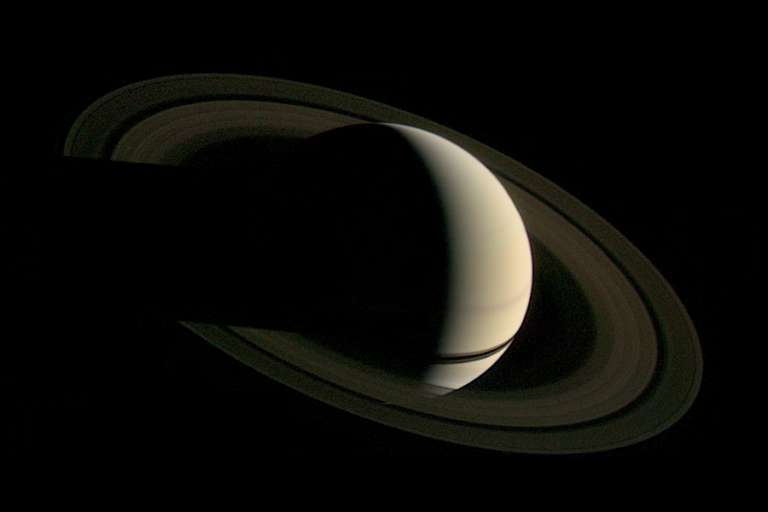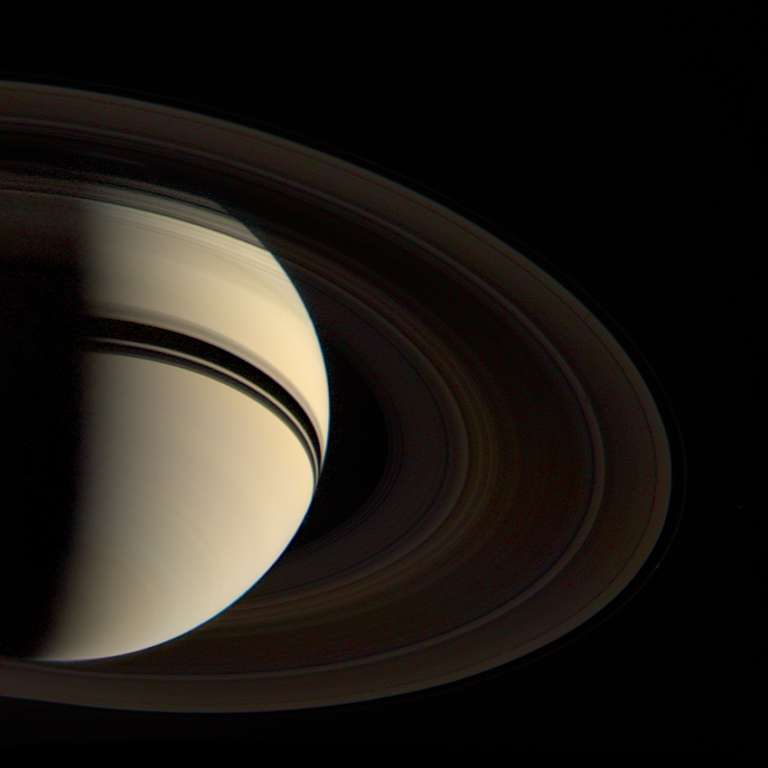Emily Lakdawalla • Jul 27, 2010
Voyager at Saturn, one year later
Here are two newly processed portraits of Saturn, showing the planet just after its equinox; the shadows of the rings are widening in a band that is slowly moving downward across the southern hemisphere. The rings appear pretty dark, since the Sun strikes them at a very low angle.
They're newly processed images, by Gordan Ugarkovic -- but they are not new images. These are Voyager 1 and Voyager 2's departing shots of Saturn, taken on December 15, 1980 and August 29, 1981. It's been very nearly three decades since those two encounters. But we've already passed one "anniversary" that's more significant in this context. May 19, 2010, marked exactly one Saturn year since Voyager 1's flyby; January 31, 2011 will be one Saturn year since Voyager 2's flyby. Thus the portraits of Saturn that Cassini is getting right now (like, for instance, this one) see the planet in the same season, with the ring shadows in the same place, and the same contrast in appearance between bright planet and dark rings, as the Voyagers saw.


At low resolution, the images do look very similar to Cassini's. Zoom in to see the high-res versions, and it's possible you'll feel a bit of disappointment. The images are so grainy, with lots and lots of random noise, especially in the darkest areas. It's impossible to see the F ring, and the C ring is nearly invisible, in the iconic Voyager 1 shot. We've become so spoiled by the crispness of Cassini images; its cameras' CCD detectors are exquisitely sensitive and subject to nothing near as much dark current or other instrument artifacts as Voyager's vidicon tubes were.
Even if they are inferior to what we can see now in Cassini images, they are, of course, poignant. And it boggles the mind to think that in all the time that has passed since the Voyagers encountered Saturn, very nearly my entire lifetime, the ringed planet has completed just one journey around the Sun.
Support our core enterprises
Your support powers our mission to explore worlds, find life, and defend Earth. You make all the difference when you make a gift. Give today!
Donate

 Explore Worlds
Explore Worlds Find Life
Find Life Defend Earth
Defend Earth

